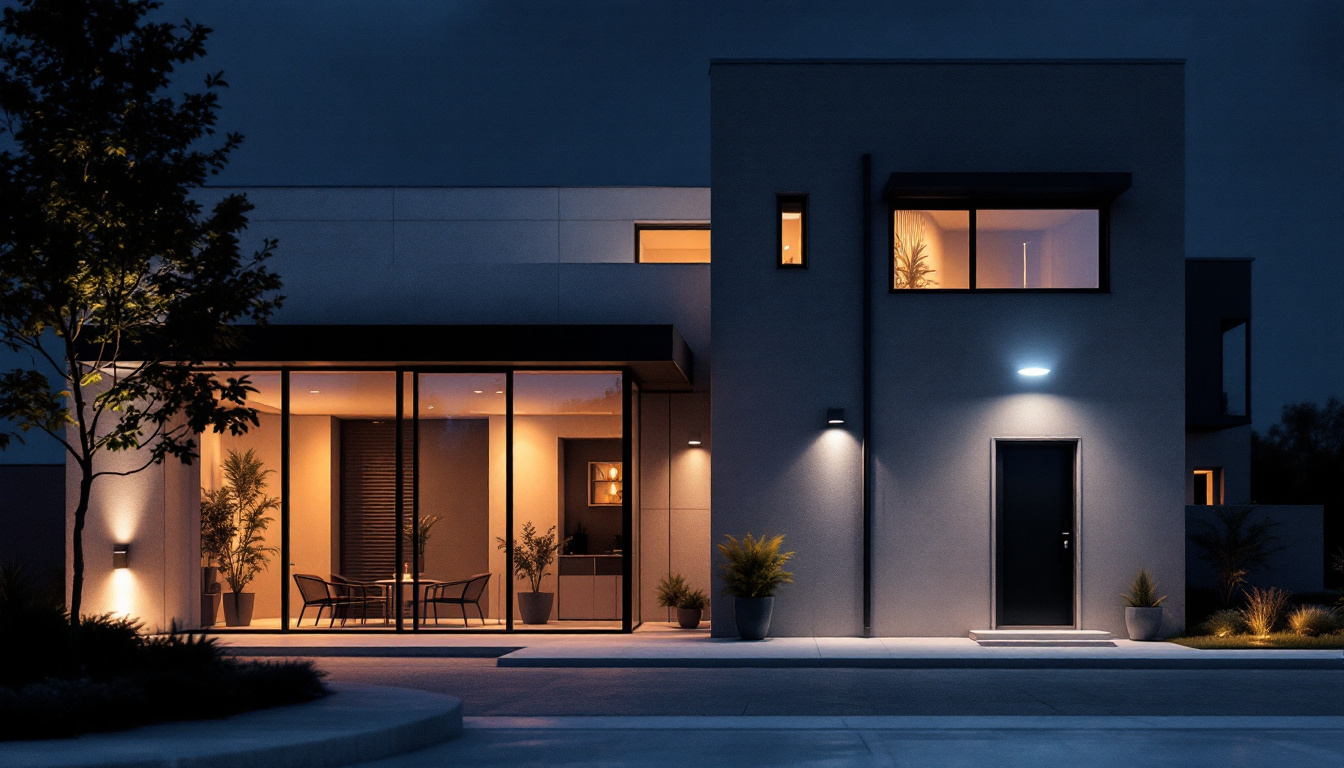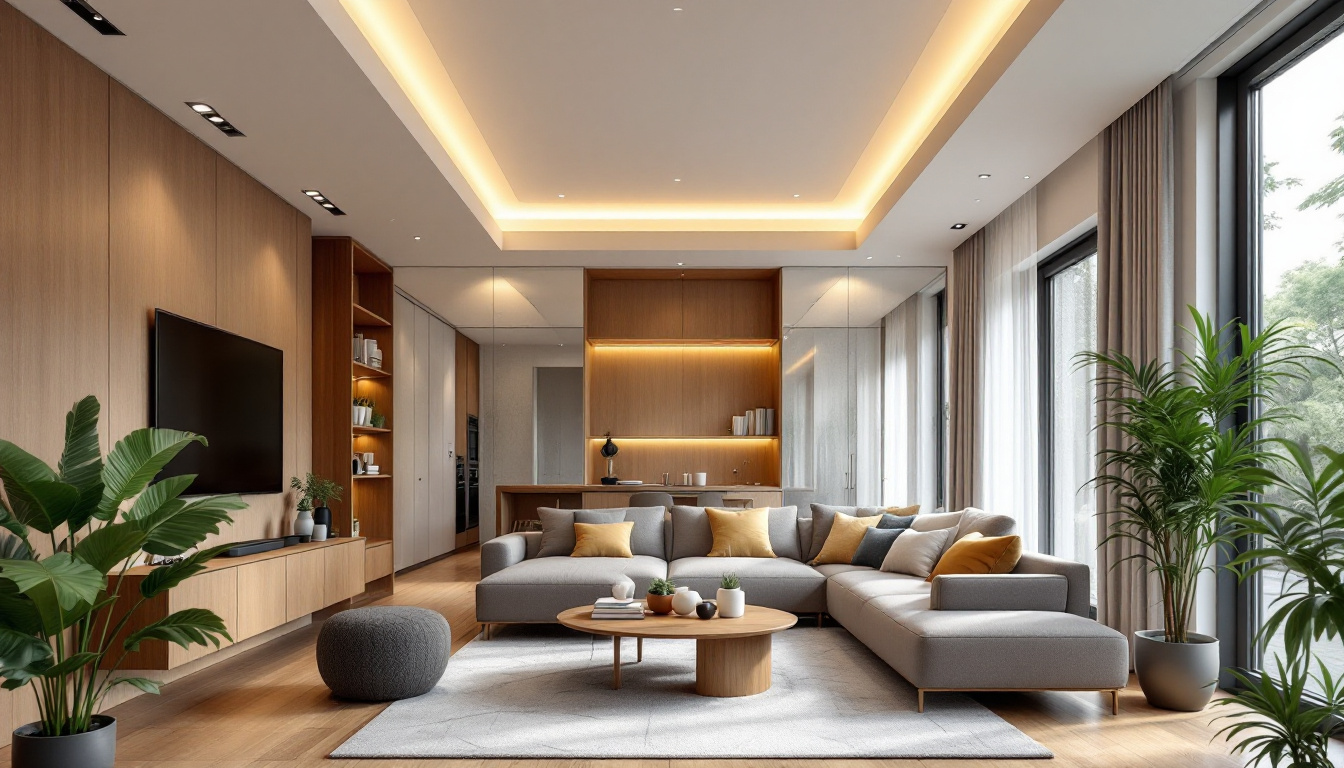

As outdoor spaces become increasingly popular for relaxation and entertainment, the importance of effective lighting cannot be overstated. For lighting contractors, understanding the intricacies of outdoor ceiling lights is essential. However, there are common pitfalls that can compromise both aesthetics and functionality. This guide aims to highlight these mistakes and provide valuable insights for lighting professionals.
Before delving into the common mistakes, it is crucial to grasp the fundamental principles of outdoor ceiling lighting. This includes understanding the various types of fixtures available, their intended uses, and the overall impact of outdoor lighting on safety and ambiance. Outdoor lighting not only serves functional purposes, such as illuminating pathways and enhancing security, but it also plays a significant role in creating inviting spaces for relaxation and entertainment. A well-lit outdoor area can transform a simple backyard into a cozy retreat or an elegant venue for gatherings.
Outdoor ceiling lights come in various styles, including flush mounts, pendant lights, and chandeliers. Each type serves a different purpose and can dramatically affect the atmosphere of an outdoor space. Flush mounts are ideal for low ceilings, providing a sleek look without obstructing views. Pendant lights, on the other hand, can add a touch of elegance and are often used in dining areas or patios. They come in a variety of designs, from rustic to modern, allowing homeowners to choose fixtures that complement their personal style.
Chandeliers can create a statement piece, particularly in larger outdoor areas. These fixtures can be adorned with crystals or unique materials, adding a layer of sophistication to outdoor dining or lounging spaces. Additionally, some outdoor chandeliers are designed to withstand the elements, ensuring they remain beautiful and functional year-round. Understanding these options allows contractors to recommend the best fixtures for their clients’ needs, ensuring that each installation enhances both the aesthetic and practical aspects of outdoor living.
Placement is critical when it comes to outdoor ceiling lights. Proper positioning not only enhances the aesthetic appeal but also ensures safety. Lights should be installed at appropriate heights and distances to avoid glare and provide sufficient illumination. Contractors must consider the layout of the space and the activities that will take place there. For instance, lights positioned over seating areas should provide soft, ambient light to create a warm atmosphere, while brighter lights may be necessary for pathways and entryways to ensure safe navigation.
Moreover, the angle and direction of the light can significantly influence the overall effect. Strategically placed fixtures can highlight architectural features or landscaping, adding depth and interest to the outdoor environment. Additionally, incorporating dimmers or smart lighting solutions can allow homeowners to adjust the intensity of their outdoor lighting, adapting the ambiance for different occasions, whether it’s a lively summer barbecue or a quiet evening under the stars. By paying attention to these details, contractors can help clients achieve a well-balanced and functional outdoor lighting design that enhances their outdoor experience.
Even experienced lighting contractors can fall into traps that lead to subpar installations. Here are some of the most common mistakes to avoid when working with outdoor ceiling lights.
One of the most significant errors is neglecting to consider the surrounding environment. Outdoor spaces vary greatly in terms of natural light, landscaping, and architectural features. Failing to take these elements into account can result in poorly lit areas or overly bright spots that detract from the overall design.
Contractors should assess the site during different times of the day to understand how natural light interacts with the space. This will help in selecting the right fixtures and determining their placement for optimal effect. Additionally, it’s important to consider seasonal changes that can affect lighting needs. For instance, a garden that is lush and vibrant in summer may look stark in winter, necessitating different lighting strategies to maintain visual interest throughout the year.
Outdoor lighting fixtures must be designed to withstand the elements. Using indoor-rated fixtures outdoors can lead to premature failure due to moisture, UV exposure, and temperature fluctuations. It is essential to choose fixtures that are specifically rated for outdoor use, ensuring they are durable and long-lasting.
Additionally, consider the materials used in the fixtures. Corrosion-resistant materials like stainless steel or treated aluminum can significantly extend the lifespan of outdoor lights. Beyond just the fixtures themselves, the installation process should also account for drainage and moisture management. Proper sealing and placement can prevent water accumulation, which is a common cause of electrical failures in outdoor lighting systems.
In today’s world, energy efficiency is a priority for many homeowners. Using traditional incandescent bulbs can lead to high energy bills and frequent replacements. Instead, contractors should recommend LED fixtures, which are not only energy-efficient but also have a longer lifespan.
Moreover, incorporating smart lighting solutions can enhance energy savings. Motion sensors and timers can ensure that lights are only on when needed, further reducing energy consumption. Contractors should also educate clients about the benefits of dimmable LED options, which allow for customizable brightness levels depending on the time of day or occasion. This flexibility not only saves energy but also enhances the ambiance of outdoor spaces, making them more inviting for gatherings and events.
Design plays a pivotal role in outdoor lighting. It is not merely about functionality; aesthetics are equally important. The right design can elevate the outdoor space and create a welcoming atmosphere. Thoughtful lighting can transform a simple backyard into an enchanting retreat, making it a place where memories are made and cherished.
When selecting outdoor ceiling lights, it is essential to ensure that they complement the overall design of the space. Mixing styles can lead to a disjointed appearance. Contractors should consider the architectural style of the home and the existing outdoor decor when choosing fixtures.
For instance, a modern home may benefit from sleek, minimalist fixtures, while a traditional home might look best with classic, ornate designs. A cohesive look enhances the overall appeal and value of the property. Additionally, color temperature plays a significant role; warm white lights can create an inviting ambiance, while cooler tones may lend a more contemporary feel. By harmonizing these elements, homeowners can achieve a seamless integration of their outdoor lighting with the architectural features of their home.
Layering light is a technique that can add depth and dimension to outdoor spaces. Relying solely on ceiling lights can create flat lighting that lacks interest. Instead, contractors should encourage clients to incorporate other lighting types, such as wall sconces, path lights, and landscape lighting.
This layered approach not only improves visibility but also creates a more inviting atmosphere. It allows for different moods to be set depending on the occasion, whether it be a cozy family dinner or a lively outdoor party. Furthermore, accent lighting can highlight specific features, such as a beautiful tree or a water fountain, adding a focal point that draws the eye and enhances the overall design. By strategically placing lights at varying heights and angles, outdoor spaces can be transformed into dynamic environments that feel both functional and enchanting.
Safety should always be a top priority in outdoor lighting installations. Contractors must ensure that all installations comply with local codes and regulations. This not only protects the contractor but also the homeowner.
Local building codes often dictate specific requirements for outdoor lighting, including wiring methods, fixture types, and installation heights. Familiarizing oneself with these codes is crucial to avoid costly fines and ensure a safe installation.
Contractors should also consider the electrical load of the fixtures being installed. Overloading circuits can lead to failures or even fire hazards. A thorough understanding of the electrical system is essential for safe and compliant installations.
Improper wiring can lead to a host of problems, including flickering lights, short circuits, or even electrical fires. Contractors must ensure that all wiring is done according to best practices and that connections are secure and weatherproof.
Using outdoor-rated wiring and connectors is essential. Additionally, employing GFCI (Ground Fault Circuit Interrupter) outlets can provide an extra layer of safety, protecting against electrical shock in wet conditions.
Even the best outdoor ceiling lights require maintenance to ensure longevity and performance. Educating clients on proper care can significantly enhance the lifespan of their lighting fixtures.
Outdoor fixtures are exposed to the elements, which can lead to dirt and grime buildup. Regular cleaning is essential to maintain their appearance and functionality. Contractors should recommend cleaning schedules based on the specific environment, as areas with more dust or moisture may require more frequent attention.
Using mild soap and water is often sufficient, but contractors should advise clients to avoid harsh chemicals that could damage the finish of the fixtures.
Encouraging clients to conduct periodic inspections of their outdoor lighting can help identify issues before they become major problems. Checking for signs of wear, such as frayed wires or rusted fixtures, can prevent costly repairs down the line.
Additionally, ensuring that bulbs are replaced promptly can maintain the desired level of illumination and prevent uneven lighting in the space.
Outdoor ceiling lighting is a vital aspect of creating functional and inviting outdoor spaces. By avoiding common mistakes and adhering to best practices, lighting contractors can ensure successful installations that meet their clients’ needs. Understanding the nuances of outdoor lighting, from fixture selection to compliance with local codes, can significantly enhance the quality of work delivered.
Ultimately, the goal is to create outdoor environments that are not only safe and well-lit but also aesthetically pleasing. With careful planning and attention to detail, lighting contractors can elevate their projects and leave a lasting impression on their clients.
Ready to take your outdoor lighting projects to the next level? At LumenWholesale, we provide lighting contractors with the finest selection of spec-grade outdoor ceiling lights and more, all at unbeatable wholesale prices. Say goodbye to local distributor markups and hello to top-quality lighting that meets the highest industry standards. With our hassle-free bulk buying and free shipping, you can trust that you’re getting premium lighting at the best value — no hidden fees, no compromises. Elevate your lighting installations today and create the perfect ambiance for any outdoor space. Visit LumenWholesale now to explore our extensive selection and experience the perfect blend of quality, affordability, and convenience.

Discover the essential insights lighting contractors need about architectural wall packs.

Discover the top five reasons why lighting contractors should prioritize calculating the right number of LED high bay lights for any space.

Discover how 6-inch LED recessed lighting can transform your business strategy and help you secure more lighting contracts.

Discover the common pitfalls lighting contractors face when sourcing industrial lighting supplies and learn how to avoid them.
Get notified when NEW deals are released.
Optimize your budget with wholesale discounts.
Only top-quality, specification-grade lighting products.
No additional costs at checkout - what you see is what you pay.
We understand the unique needs of contractors.